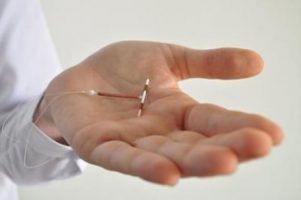- Home
- Editorial
- News
- Practice Guidelines
- Anesthesiology Guidelines
- Cancer Guidelines
- Cardiac Sciences Guidelines
- Critical Care Guidelines
- Dentistry Guidelines
- Dermatology Guidelines
- Diabetes and Endo Guidelines
- Diagnostics Guidelines
- ENT Guidelines
- Featured Practice Guidelines
- Gastroenterology Guidelines
- Geriatrics Guidelines
- Medicine Guidelines
- Nephrology Guidelines
- Neurosciences Guidelines
- Obs and Gynae Guidelines
- Ophthalmology Guidelines
- Orthopaedics Guidelines
- Paediatrics Guidelines
- Psychiatry Guidelines
- Pulmonology Guidelines
- Radiology Guidelines
- Surgery Guidelines
- Urology Guidelines
New Guidelines on Long-acting reversible contraceptives,LARC Released by ACOG

Long-acting reversible contraceptives (LARC), including implants and intrauterine devices (IUDs), are a safe and effective contraception option for many women, according to a practice bulletin published online Oct. 24 in Obstetrics & Gynecology.
Summary of Recommendations
The following recommendations are based on good and consistent scientific evidence (Level A):
- Insertion of an IUD immediately after first-trimester uterine aspiration should be offered routinely as a safe and effective contraceptive option.
- Insertion of the contraceptive implant on the same day as first-trimester or second-trimester induced or spontaneous abortion should be offered routinely as a safe and effective contraceptive option.
- Routine antibiotic prophylaxis is not recommended before IUD insertion.
The following recommendations are based on limited or inconsistent scientific evidence (Level B):
- Intrauterine devices and the contraceptive implant should be offered routinely as safe and effective contraceptive options for nulliparous women and adolescents.
- Insertion of an IUD or an implant may occur at any time during the menstrual cycle as long as pregnancy may be reasonably excluded.
- Insertion of an IUD immediately after confirmed completion of first-trimester medication-induced abortion should be offered routinely as a safe and effective contraceptive option.
- Immediate postpartum IUD insertion (ie, within 10 minutes after placental delivery in vaginal and cesarean births) should be offered routinely as a safe and effective option for postpartum contraception.
- Immediate postpartum initiation of the contraceptive implant (ie, insertion before hospital discharge after a hospital stay for birth) should be offered routinely as a safe and effective option for postpartum contraception, regardless of breastfeeding status.
- Women who have not undergone routine screening for STIs or who are identified to be at increased risk of STIs based on patient history should receive CDC-recommended STI screening at the time of a single visit for IUD insertion. Intrauterine device insertion should not be delayed while awaiting test results. Treatment for a positive test result may occur without removal of the IUD.
- Intrauterine devices may be offered to women with a history of ectopic pregnancies.
The following recommendations are based primarily on consensus and expert opinion (Level C):
- Long-acting reversible contraceptives have few contraindications and should be offered routinely as safe and effective contraceptive options for most women.
- The copper IUD should be offered routinely to women who request emergency contraception and are eligible for IUD placement.
- To improve LARC method satisfaction and continuation, patient counseling should include information on expected bleeding changes and reassurance that these changes are not harmful.
- Endometrial biopsy, colposcopy, cervical ablation or excision, and endocervical sampling may all be performed with an IUD in place.
- Actinomyces on cytology is considered an incidental finding. In the absence of symptoms, no antimicrobial treatment is needed, and the IUD may be left in place.
- Intrauterine device removal is recommended in pregnant women when the strings are visible or can be removed safely from the cervical canal.
- There is no compelling evidence for the removal of an IUD or implant before its expiration date in menopausal women.
For detailed reference log on to :
Next Story
NO DATA FOUND

Disclaimer: This site is primarily intended for healthcare professionals. Any content/information on this website does not replace the advice of medical and/or health professionals and should not be construed as medical/diagnostic advice/endorsement or prescription. Use of this site is subject to our terms of use, privacy policy, advertisement policy. © 2020 Minerva Medical Treatment Pvt Ltd